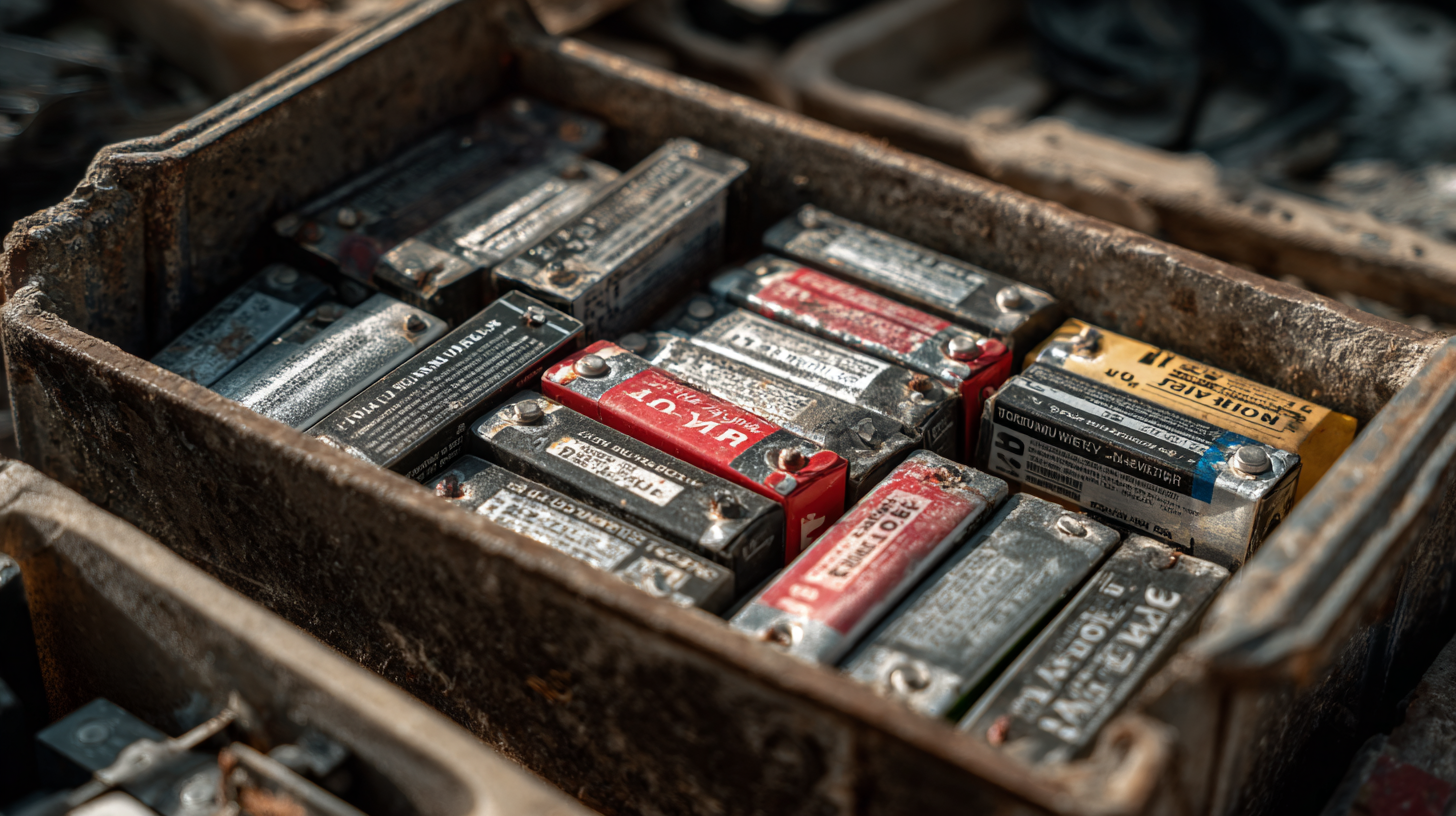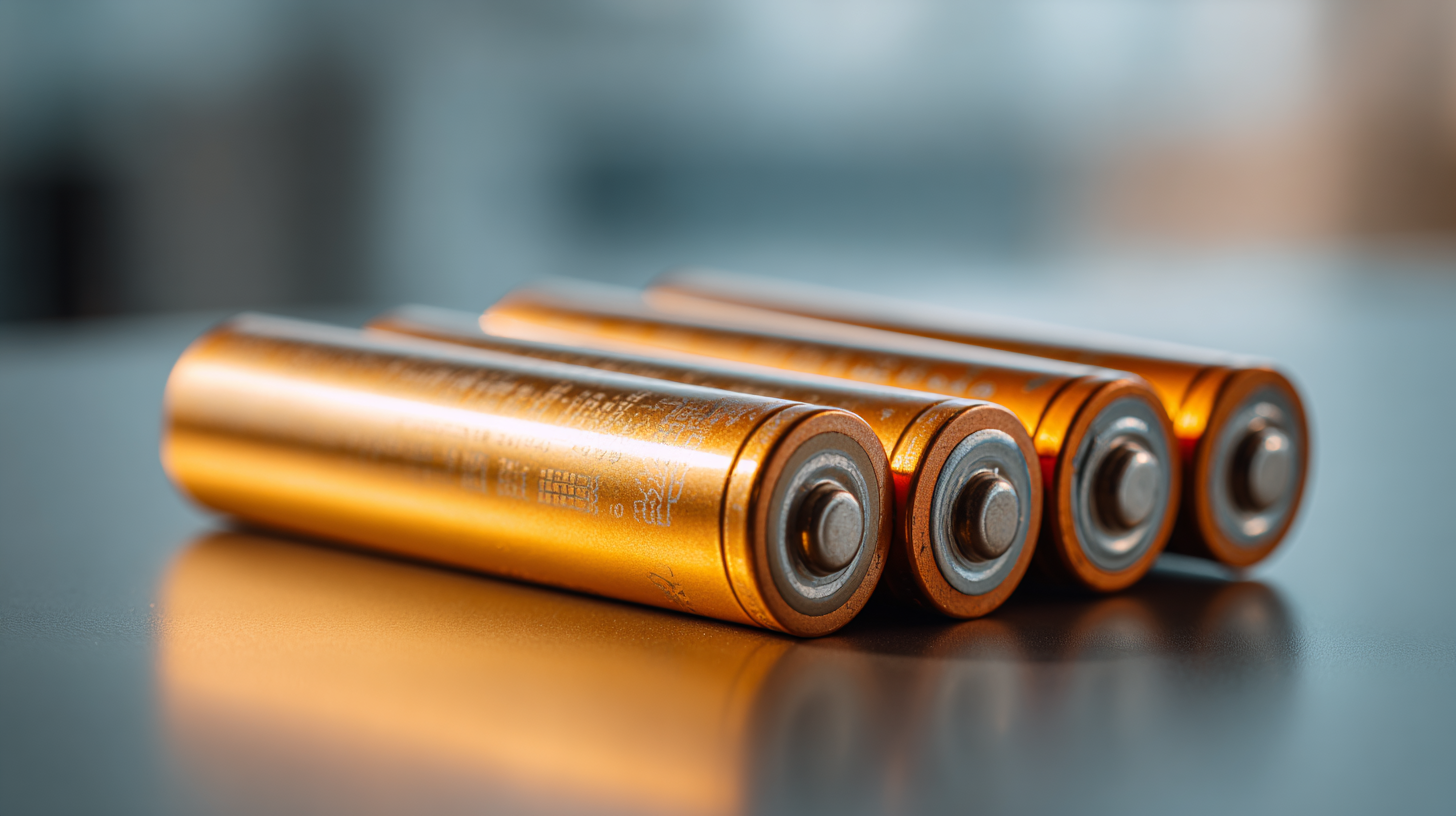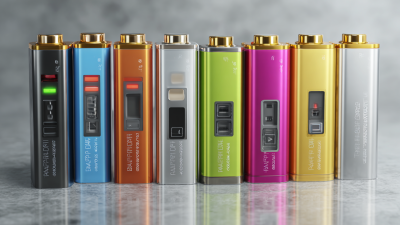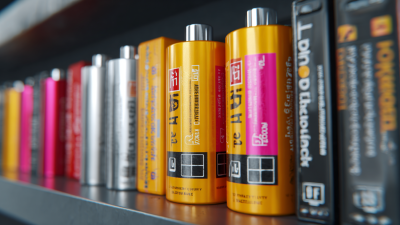When it comes to maximizing the performance and longevity of your devices, selecting the right 14.4v Lithium Ion Battery Pack is crucial. With various options available on the market, understanding the key factors that influence battery efficiency and lifespan can make all the difference. This guide will explore essential considerations such as capacity, discharge rates, and compatibility with your equipment, ensuring that you make informed decisions.
 Additionally, we will discuss the importance of proper maintenance and charging techniques to further enhance the durability of your battery pack. By the end of this article, you will be equipped with the knowledge needed to choose the optimal 14.4v Lithium Ion Battery Pack tailored to your specific needs, allowing you to enjoy reliable performance and extended usage in any application.
Additionally, we will discuss the importance of proper maintenance and charging techniques to further enhance the durability of your battery pack. By the end of this article, you will be equipped with the knowledge needed to choose the optimal 14.4v Lithium Ion Battery Pack tailored to your specific needs, allowing you to enjoy reliable performance and extended usage in any application.
The performance and longevity of a 14.4v lithium-ion battery pack hinge critically on understanding the underlying chemistry of lithium-ion technology. Lithium-ion batteries operate through the movement of lithium ions between the anode and cathode during charging and discharging cycles. According to the International Energy Agency (IEA), the use of lithium-ion battery technology in consumer electronics and electric vehicles is expected to escalate, leading to a global market increase from $44 billion in 2020 to an estimated $100 billion by 2025. This rapid growth highlights the necessity for consumers and manufacturers to select battery packs that maximize both efficiency and lifespan.

The choice of cathode material plays an integral role in a battery's overall performance. For instance, lithium iron phosphate (LiFePO4) offers a stable thermal profile and longevity, while lithium nickel manganese cobalt (LiNiMnCoO2) delivers higher energy density and efficiency. Research published in the Journal of Power Sources indicates that varying the cathode chemistry can result in performance differences of up to 30%, impacting not just energy output but also the rate of degradation over time. By prioritizing the right chemistry when selecting a 14.4v lithium-ion battery pack, one can ensure enhanced performance while reducing the risk of premature failure.
When selecting a 14.4V lithium-ion battery pack, evaluating capacity and discharge rates is crucial for ensuring optimal performance and longevity. The capacity, typically measured in amp-hours (Ah), indicates how much energy the battery can store. According to a report by the International Energy Agency, higher capacity batteries allow for longer usage times, which is especially important in applications such as power tools or electric vehicles that require extended operational periods without recharging. For instance, a battery rated at 3Ah can theoretically power a device drawing 1A for three hours, emphasizing the importance of selecting a battery that meets the specific energy needs of your application.
Discharge rates, measured in C-rates, determine how quickly energy can be drawn from a battery. A higher C-rate means the battery can provide more power, which is essential for high-drain devices. A study published in the Journal of Power Sources highlights that battery packs designed with a discharge rate of 1C or higher can effectively support devices requiring immediate bursts of energy, such as drills or saws. Balancing the capacity with the correct discharge rate ensures that the battery not only provides sufficient power but also enhances its lifespan by preventing excessive strain during use. Therefore, when considering a 14.4V lithium-ion battery pack, both capacity and discharge rates should align with the specific demands of your intended application for optimal performance.
When selecting a 14.4v lithium-ion battery pack, the foremost consideration should be its compatibility with your devices. Each electronic device has specific voltage and current requirements, which means not all 14.4v batteries will work seamlessly. It’s essential to check the manufacturer's specifications of your device to ensure the battery can deliver the necessary power without risking damage.
Failure to match these specifications could lead to suboptimal performance or even device failure.
Additionally, consider the connector type and size. Devices often come with particular connection interfaces, and using a mismatched battery pack could result in poor connectivity or power loss. Furthermore, some devices might have built-in safety features that only recognize batteries from specific brands or models.
Therefore, researching whether your chosen battery pack is compatible with your devices can prevent unnecessary complications and enhance performance.
Always prioritize compatibility to ensure optimal usage and longevity of both the battery pack and your electronic devices.
When selecting a 14.4v lithium-ion battery pack, understanding the cycle life is crucial for ensuring optimal performance and longevity. Cycle life refers to the number of complete charge and discharge cycles a battery can undergo before its capacity significantly diminishes. According to a report by the International Energy Agency (IEA), high-quality lithium-ion batteries can typically endure between 300 to 500 cycles for consumer electronics and up to 1,500 cycles for electric vehicles, indicating the potential for extended use depending on application and maintenance.

Furthermore, factors such as temperature, charge rates, and depth of discharge directly affect cycle life. For instance, a study published in the Journal of Power Sources reveals that operating a lithium-ion battery at higher temperatures can reduce its cycle life by up to 50%. Therefore, ensuring that battery packs operate within specified temperature ranges and are charged properly can dramatically extend their lifespan. By prioritizing these elements, users can select a battery pack that not only meets their power demands but also contributes to a lower total cost of ownership through enhanced longevity.
When selecting a 14.4v lithium-ion battery pack, prioritizing safety features is crucial to ensure reliable operation. One of the key features to look for is the inclusion of built-in protection circuits that guard against overvoltage, overcurrent, and overheating. These protective mechanisms help prevent potentially hazardous situations, thus extending the battery's lifespan while maintaining optimal performance. Additionally, thermal fuses and pressure vents can provide additional layers of safety, ensuring that the battery can handle unexpected conditions without risk of combustion or leakage.
Another important aspect to consider is the quality of the materials used in the battery pack's construction. High-quality cells and robust casing materials can significantly influence both performance and safety. Look for reputable brands that have undergone thorough certification processes, such as UL or CE, which indicate that the battery meets specific safety standards. Finally, ensure that the battery pack comes with a reliable warranty and customer support, as this reflects the manufacturer's confidence in their product's safety and longevity, giving users peace of mind during operation.
This chart compares various performance metrics of 14.4v lithium-ion battery packs including cycle life, charge time, discharge rate, and temperature range. These metrics are critical in assessing the optimal performance and longevity of the battery packs.








